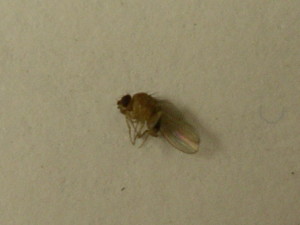 |
December 2014 Newsletter |
Fruit flies
Fruit flies can become a problem at any time of year because they are attracted to ripe or fermenting fruit. Fruit flies can be brought into the home from ripe fruits or vegetables picked from the garden or items purchased at the grocery store.
Adults are small (about 1/8 of an inch) and usually have red eyes. The front portion of the body is tan while the back portion is dark brown or black. If given the opportunity, females can lay up to 500 eggs. Larvae feed near the surface of fermenting foods or other organic matter.
Prevention is the best way to deal with fruit flies. Do not purchase over ripened fruit or vegetables. Fruit and vegetables should be eaten in a timely manner or stored in the refrigerator. If storage in the refrigerator is not an option because you are ripening the item, place it in a paper bag and use a clothespin or chip clip to close the bag. All recyclables should be rinsed thoroughly before placing them into the recycling bin. The recycling bin and garbage can should be cleaned out on a regular basis to eliminate any spilled material.
To eliminate a fruit fly infestation, all sources must be located and eliminated. Insecticides will not help if sources are not eliminated. While searching and eliminating breeding sources, a trap can be constructed to capture adult flies. Create a paper funnel by rolling notebook paper and place the funnel into a jar that contains a small amount of apple cider vinegar in the bottom.
For more information or help with identification, contact Wizzie Brown, Texas A&M AgriLife Extension Service Program Specialist at 512.854.9600.

